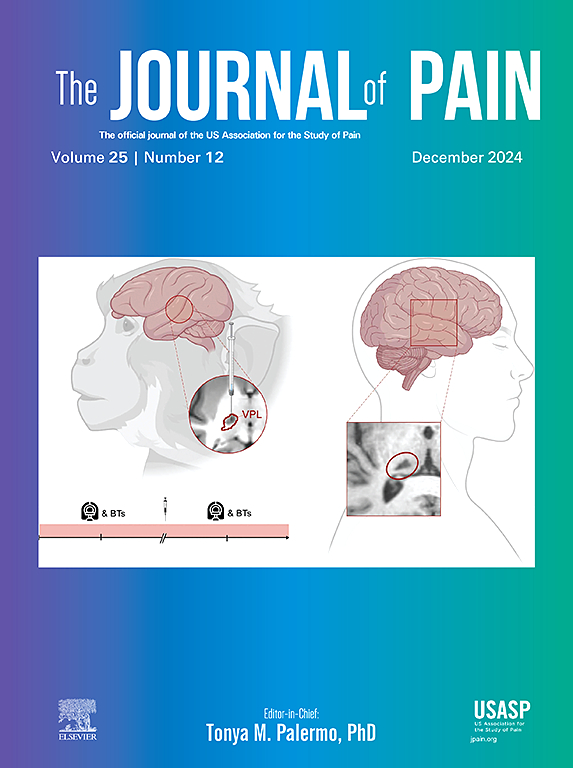Low working memory underpins the association between aberrant functional properties of pain modulation circuitry and chronic back pain severity
IF 4
2区 医学
Q1 CLINICAL NEUROLOGY
引用次数: 0
Abstract
Working memory impairments are common in chronic low back pain and are linked to increased pain severity. Reduced working memory may contribute to chronic pain by disrupting the ability to contextualize threat and modulate pain. These processes involve the dorsolateral prefrontal cortex and its interaction with the periaqueductal gray. However, it is unclear how working memory variability impacts activation and connectivity in this pathway and influences chronic pain. Here, we investigated how working memory variability affected activations in the dorsolateral prefrontal cortex – periaqueductal gray pathway during a pain modulation task (schema task) in individuals with chronic low back pain. This task measures how perceived threat of a strong noxious stimulus biases pain perception, referred to as threat bias. Individuals with worse threat bias experienced more widespread pain and less relief. Lower working memory accuracy was associated with abnormally increased activations in the dorsolateral prefrontal cortex and periaqueductal gray during low-threat conditions. In high-threat conditions, low activation in these regions correlated with greater chronic pain and impaired working memory. Baseline functional connectivity between the dorsolateral prefrontal cortex and periaqueductal gray also predicted working memory variability and pain severity. These findings suggest that working memory and pain modulation converge within the dorsolateral prefrontal cortex-periaqueductal gray pathway, where abnormalities contribute to chronic pain. This highlights cognitive-pain interactions and the potential of targeting working memory and this pathway for therapy.
Perspective
This article presents evidence that low working memory is associated with abnormalities in activations and connectivity in the pain modulation pathways in people with chronic low back pain. These changes predict chronic pain severity indicating a potential association between working memory, pain modulation pathways and chronic pain severity.
求助全文
约1分钟内获得全文
求助全文
来源期刊

Journal of Pain
医学-临床神经学
CiteScore
6.30
自引率
7.50%
发文量
441
审稿时长
42 days
期刊介绍:
The Journal of Pain publishes original articles related to all aspects of pain, including clinical and basic research, patient care, education, and health policy. Articles selected for publication in the Journal are most commonly reports of original clinical research or reports of original basic research. In addition, invited critical reviews, including meta analyses of drugs for pain management, invited commentaries on reviews, and exceptional case studies are published in the Journal. The mission of the Journal is to improve the care of patients in pain by providing a forum for clinical researchers, basic scientists, clinicians, and other health professionals to publish original research.
 求助内容:
求助内容: 应助结果提醒方式:
应助结果提醒方式:


